Concept and creative process
'Grange Hill' was initially an 18-part children's drama serial. It was watched by 8 million children following the adventures of Class H1 and subsequently ran for 30 years. The brief from the executive producer was to create a sequence which would appeal to the majority of British schoolchildren at state schools. The idea for the title sequence was to reflect the lives of children in an ordinary state comprehensive or secondary modern school. It was the first time children had a drama series aimed specifically at them, which handled current, and often controversial, 'gritty' everyday issues. The styling chosen was that of a comic. Comics were widely available and read by children at that time, such as The Beano, Dandy, Bunty, School Friend, Victor and Valiant. The slight retro styling was chosen to be reminiscent of the comics of the 1950s, the heyday of the British comic, before the distraction of TV, which was in its heyday in the 1970s when this sequence was designed. Illustrations were created on cel in black outline using a chinagraph pencil and back painted in colour with animation cel paint. Due to financial constraints, the animations were created with just 3 illustrations in a sequence, which either cut or mixed from one illustration to the next. This gave an impression of sequential movement. The sequence also had an illusion of animation, simply by using whip pans (12 frame moves), cuts, mixes and zooms. The sausage on a fork was on a separate cel layer panned in over the background illustration. The sequence was shot on 35mm film on a rostrum camera and was created entirely in-camera (i.e. no edits) and worked first time (i.e. no retakes). Music was commissioned and recorded to match the rostrum shoot. Unfortunately, the executive producer disliked the specially created audio, and two days before the first transmission chose a piece of music from the BBC gramophone library to partner the sequence. It was never envisaged that this series would have such a long and successful run.
Illustrations - Bob Cosford.
Hand-drawn maintitle lettering and subheadings - Mandy Simons.
Rostrum camera shoot in-house at BBC Television Centre by Colin Hancock.
Idea generation, creative direction and rostrum direction - Liz Friedman.
More Information
Grange Hill original animation artwork and camera dope sheet

Grange Hill original animation artwork 1
The illustrations, done by Bob Cosford, were drawn in black on clear cels then back painted in colour. Each animation consisted only of 3 drawings to show basic movement rather than fully animated. These cels were pegged together in exact registration. Items such as the sausage and speed lines were painted on separate overlay panning cels.
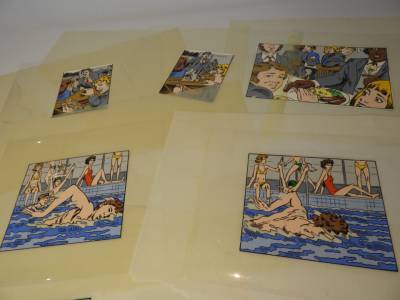
Grange Hill original animation artwork 2
The illustrations, done by Bob Cosford, were drawn in black on clear cels then back painted in colour. Each animation consisted only of 3 drawings to show basic movement rather than fully animated. These cels were pegged together in exact registration. Items such as the sausage and speed lines were painted on separate overlay panning cels.
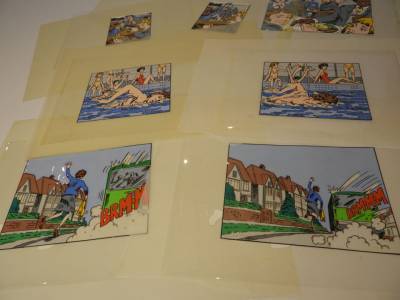
Grange Hill original animation artwork 3
The illustrations, done by Bob Cosford, were drawn in black on clear cels then back painted in colour. Each animation consisted only of 3 drawings to show basic movement rather than fully animated. These cels were pegged together in exact registration. Items such as the sausage and speed lines were painted on separate overlay panning cels.
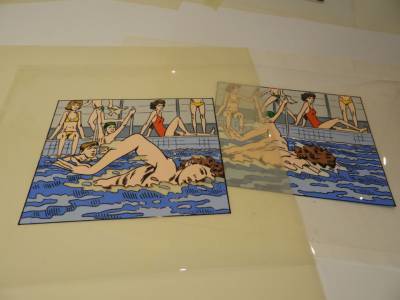
Grange Hill original animation artwork 4
The illustrations, done by Bob Cosford, were drawn in black on clear cels then back painted in colour. Each animation consisted only of 3 drawings to show basic movement rather than fully animated. These cels were pegged together in exact registration. Items such as the sausage and speed lines were painted on separate overlay panning cels.

Grange Hill original animation artwork 5
The illustrations, done by Bob Cosford, were drawn in black on clear cels then back painted in colour. Each animation consisted only of 3 drawings to show basic movement rather than fully animated. These cels were pegged together in exact registration. Items such as the sausage and speed lines were painted on separate overlay panning cels.
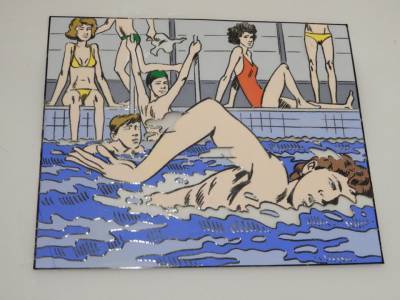
Grange Hill original animation artwork 6
The illustrations, done by Bob Cosford, were drawn in black on clear cels then back painted in colour. Each animation consisted only of 3 drawings to show basic movement rather than fully animated. These cels were pegged together in exact registration. Items such as the sausage and speed lines were painted on separate overlay panning cels.
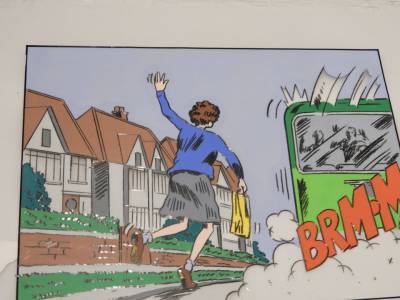
Grange Hill original animation artwork 7
The illustrations, done by Bob Cosford, were drawn in black on clear cels then back painted in colour. Each animation consisted only of 3 drawings to show basic movement rather than fully animated. These cels were pegged together in exact registration. Items such as the sausage and speed lines were painted on separate overlay panning cels.
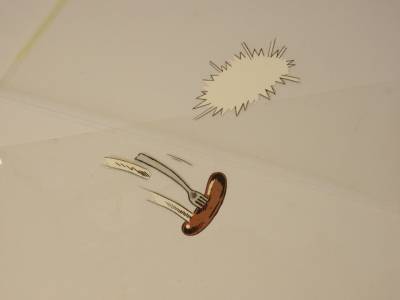
Grange Hill titles sausage overlay 1
The illustrations, done by Bob Cosford, were drawn in black on clear cels then back painted in colour. Each animation consisted only of 3 drawings to show basic movement rather than fully animated. These cels were pegged together in exact registration. Items such as the sausage and speed lines were painted on separate overlay panning cels.

Grange Hill titles sausage overlay 2
The illustrations, done by Bob Cosford, were drawn in black on clear cels then back painted in colour. Each animation consisted only of 3 drawings to show basic movement rather than fully animated. These cels were pegged together in exact registration. Items such as the sausage and speed lines were painted on separate overlay panning cels.
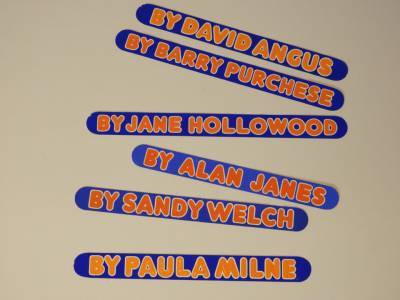
Grange Hill titles writers' credits
Each episode was written by a different writer, so their names had to be filmed separately and edited on to the end shot. These were mounted on to clear cel overlays and pegged in register. Lettering hand-painted by lettering artist Mandy Simons.
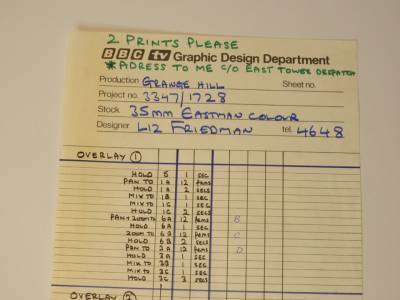
Grange Hill titles camera dope sheet 1
The original ‘dope sheet’ (terminology used to describe rostrum filming instructions for a cameraman). Here we see the instructions for the shoot so that the cameraman can film without the designer being there. All the timings are indicated on this sheet whereas the sizes and positions required are indicated on tracing paper overlays which are pegged in position as used in traditional animation.
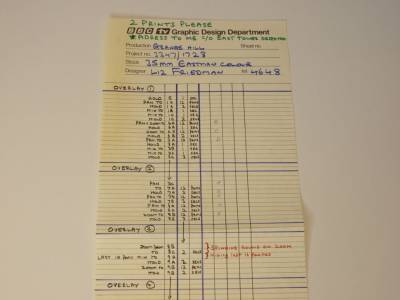
Grange Hill titles camera dope sheet 2
The original ‘dope sheet’ (terminology used to describe rostrum filming instructions for a cameraman). Here we see the instructions for the shoot so that the cameraman can film without the designer being there. All the timings are indicated on this sheet whereas the sizes and positions required are indicated on tracing paper overlays which are pegged in position as used in traditional animation.
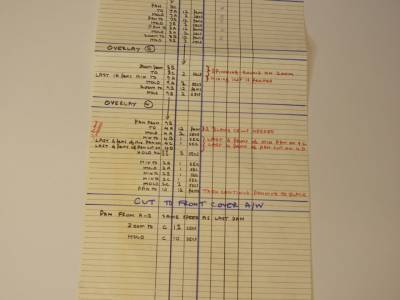
Grange Hill titles camera dope sheet 3
The original ‘dope sheet’ (terminology used to describe rostrum filming instructions for a cameraman). Here we see the instructions for the shoot so that the cameraman can film without the designer being there. All the timings are indicated on this sheet whereas the sizes and positions required are indicated on tracing paper overlays which are pegged in position as used in traditional animation.
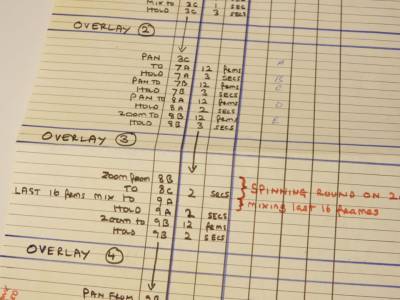
Grange Hill titles camera dope sheet 4
The original ‘dope sheet’ (terminology used to describe rostrum filming instructions for a cameraman). Here we see the instructions for the shoot so that the cameraman can film without the designer being there. All the timings are indicated on this sheet whereas the sizes and positions required are indicated on tracing paper overlays which are pegged in position as used in traditional animation.
Grange Hill artwork
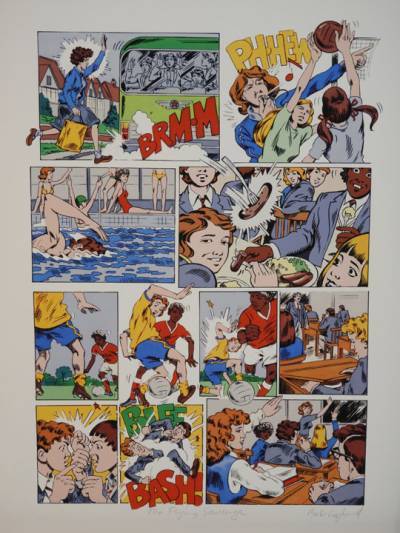
Grange Hill full page artwork
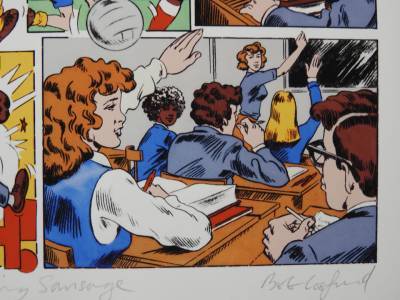
Grange Hill artwork 1
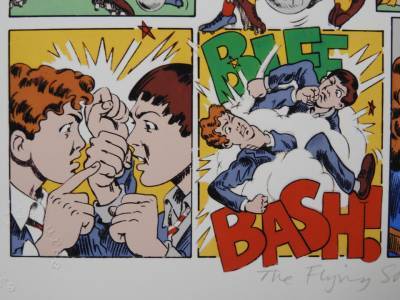
Grange Hill artwork 2

Grange Hill artwork 3
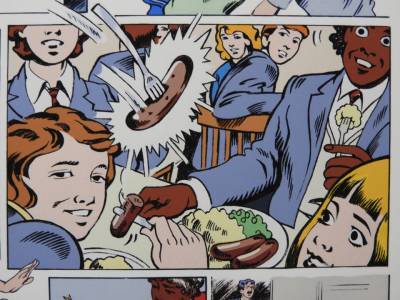
Grange Hill artwork 4
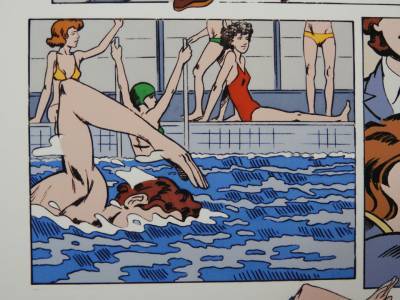
Grange Hill artwork 5

Grange Hill artwork 6
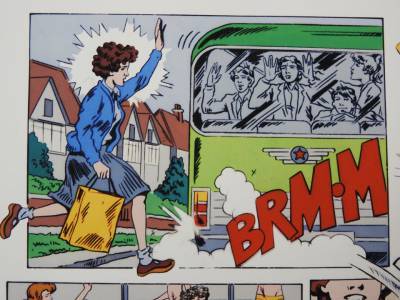
Grange Hill artwork 7
